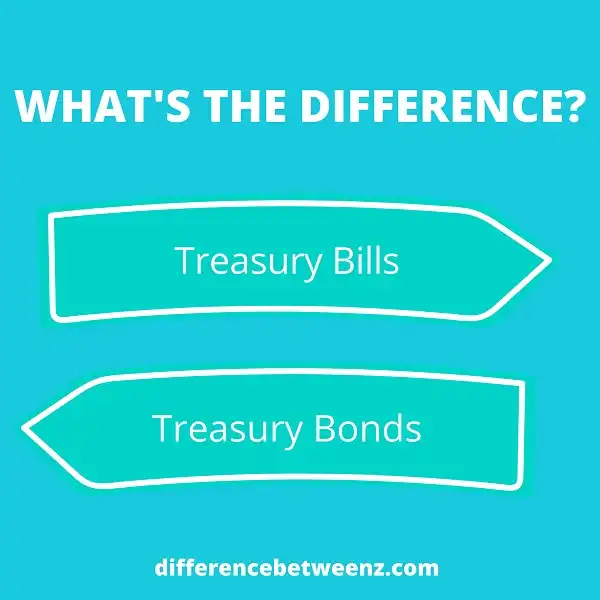When it comes to understanding the difference between treasury bills and bonds, many people can feel overwhelmed. Both instruments are issued by the government, and they both serve important purposes in the financial markets. In this post, we’ll take a look at each instrument in turn, and discuss some of the key differences between them. By the end of this post, you’ll have a better understanding of how these two investment vehicles work, and you’ll be able to make an informed decision about which one is right for you.
What are Treasury Bills?
Treasury Bills, also known as T-Bills, are short-term debt securities issued by the U.S. government with maturities of one year or less. T-Bills are sold at a discount from face value and mature at face value. The difference between the purchase price and the maturity value is the investor’s return. Treasury Bills are widely regarded as the safest investments in the world and are used by both individuals and institutional investors as a way to park cash in a low-risk, liquid security. T-Bills can be purchased directly from the Treasury through Treasury Direct or through a broker.
Treasury Bills are also traded in the secondary market, although there is typically very little secondary market activity for bills with maturities of one year or less. Treasury Bills have maturities of four weeks, thirteen weeks, and twenty-six weeks. T-Bills are issued weekly in denominations of $100, $1000, $5000, $10,000, and $100,000. Treasury Bills are backed by the full faith and credit of the U.S. government and offer a risk-free return.
What are Treasury Bonds?
Treasury bonds are debt securities issued by the federal government and backed by its full faith and credit. They are sold in denominations of $100, $1,000, $5,000, and $10,000. Treasury bonds have a fixed interest rate that is paid semiannually, and they mature in 30 years. Treasury bonds are often used as a mechanism for borrowing money by the federal government. When an individual purchases a Treasury bond, they are lending money to the government. The government then uses this money to finance its operations and pay for various expenses. Treasury bonds are considered to be one of the safest investments available because they are backed by the full faith and credit of the United States government.
Difference between Treasury Bills and Bonds
Treasury bills and bonds are two different types of debt securities issued by the U.S. government. Treasury bills, also known as T-bills, are short-term debt instruments with maturities of one year or less. Treasury bonds, on the other hand, are long-term debt instruments with maturities of 10 years or more. T-bills are typically issued at a discount from face value, while T-bonds are issued at par (face value). Interest on T-bills is paid at maturity, while interest on T-bonds is paid semi-annually. Because T-bills are issued at a discount, they typically offer lower yields than T-bonds. However, T-bonds typically have higher credit ratings than T-bills since they have longer maturities and offer greater stability to investors.
Conclusion
The Treasury Bills are short-term securities that mature in one year or less, and the Treasury Bonds are long-term securities that have a maturity of more than 10 years. In general, Treasury Bills are considered to be less risky since they have a shorter maturity date, but they also offer lower yields. Treasury Bonds are considered to be riskier but provide higher yields because investors are taking on more risk by lending their money for a longer period of time.


